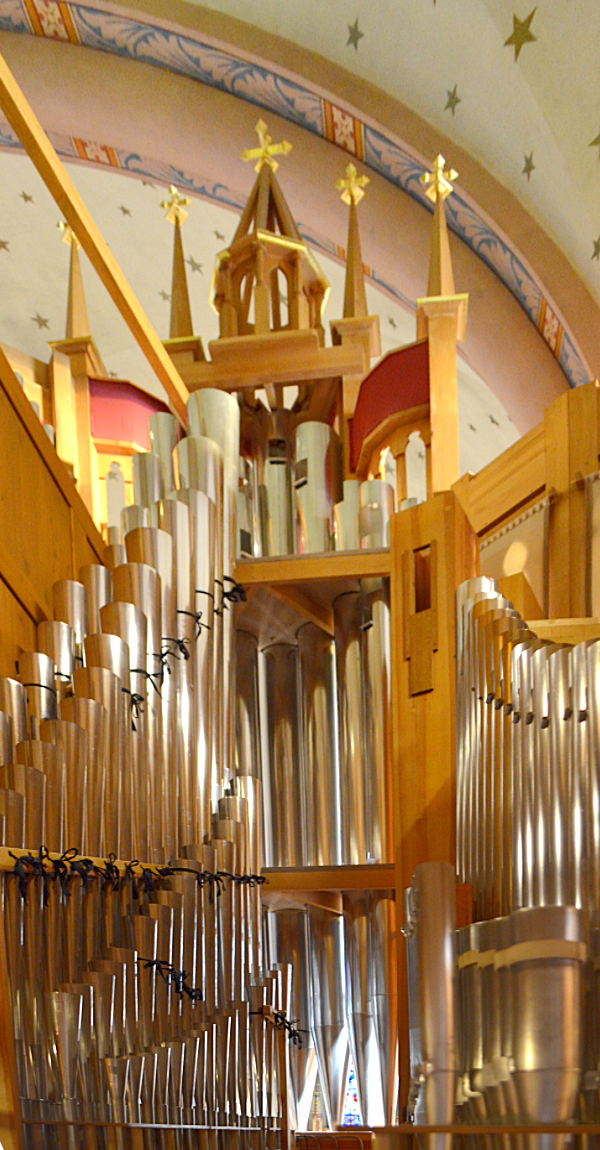Festival week
Pori Organ 9th–14th June 2025
Welcome to Pori Organ festival to hear the great organ artists around the world playing the unique Paschen Kiel organ at Central Pori Church!
Juhani Romppanen
artistic director
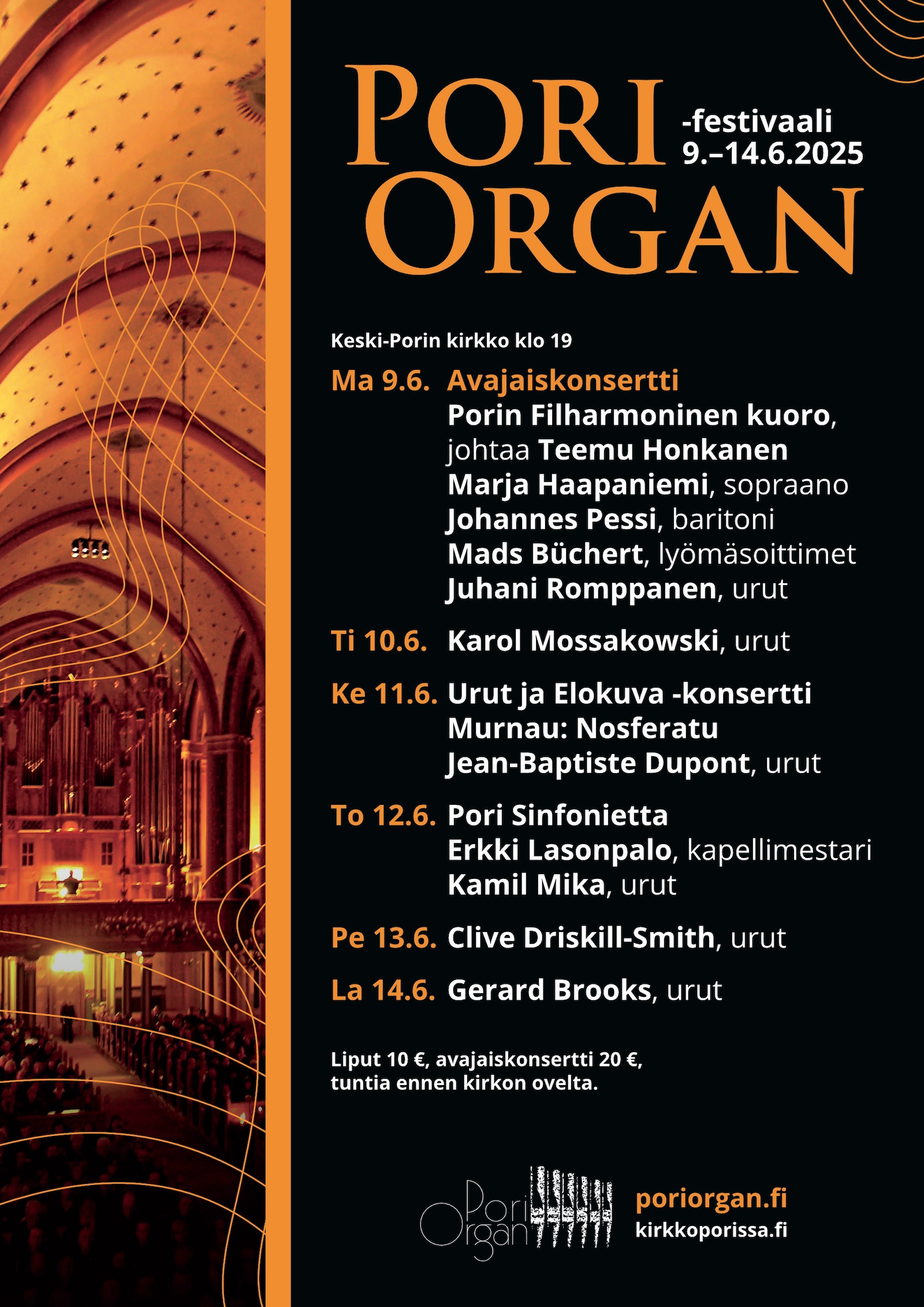
Monday 9th June
Pori Philharmonic Choir
Teemu Honkanen conductor
Marja Haapaniemi soprano
Johannes Pessi baritone
Mads Büchert percussion
Tickets 20 €
Karol Mossakowski organ
Tickets 10 €
Organ and Movie -concert
Murnau: Nosferatu
Jean Baptiste Dupont organ
Tickets 10 €
Pori Sinfonietta
Erkki Lasonpalo conductor
Kamil Mika organ
Tickets 31 / 25 / 10 € Lippu.fi
Clive Driskill-Smith organ
Tickets 10 €
Saturday 14th June
Gerald Brooks organ
Tickets 10 €
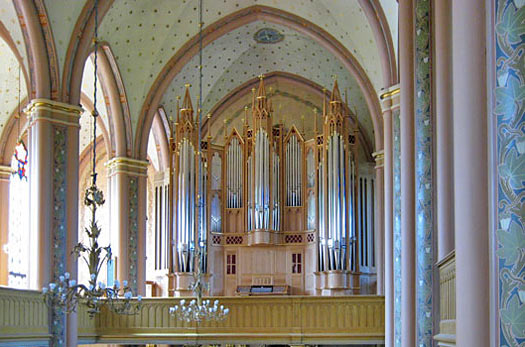
Central Pori Church Organ
Paschen Kiel Orgelbau GmbH 2007
When the new organ for Central Pori Church was being planned, two main objectives were in the forefront: firstly, to provide the congregation with a versatile and inspiring instrument and secondly, to build an organ of the highest artistic integrity based on the French Romantic tradition.
Organ building prospered in France in the second half of the 19th century. This resulted in a number of brilliant instruments being built in different parts of France, during that period. The inspiration provided by the new style of organ-building, culminated in a significant output of major organ-compositions being created. The most important composers of this style are César Franck, Louis Vierne, Camille Saint-Saëns, Alexandre Guilmant and Charles-Marie Widor.
The organ in Central Pori Church was built by the German organ-building company, Paschen Kiel Orgelbau GmbH. The specification, designed by the Parisian organ specialist Kurt Lueders, has 58 stops on three manuals and pedal. The organ-builders and voicers, Helmuth Gripentrog and Kalevi Mäkinen, were responsible for the voicing of the organ.
The organ façade was designed by Roland Monczynski, Director of the Paschen Organ Factory, who based the design on a combination of the typical characteristics of the French Romantic organ style, with that of the Neo-Gothic architecture of Central Pori Church. The casework and façade is made of oak and houses selected front pipes belonging to the stops Montre 16’ and Montre 8’, both of which are part of the division “Grand Orgue “. The remainder of this division, belonging to the main manual is located behind the façade. The Positif and Récit divisions are enclosed in swell boxes, one on top of the other, behind the Grand Orgue division. The pedal pipes are on both sides of the Grand Orgue division. The largest pedal stops, Soubasse 32´ and Bombarde 32´, are situated at the back wall of the organ case on their own wind chests.
The tonal structure of the organ specification is based on the French Romantic organ tradition and is for this reason, that the instrument’s sound reflects the quality of timbre embodied in a symphony orchestra. Emphasis is on fundamental tone, which is in turn shaped by juxtaposing and the combination of three characteristic stop families (flutes, strings and the numerous colourful and brilliant reed stops). In addition, the first and second manuals include a fully-fledged mixture chorus, e.g. Grand Orgue( the first manual): Montre 16´, Montre 8´, Prestant 4´, Doublette 2´, Fourniture 5r, Cymbale 4r. Additionally the organ has colourful mutation ranks, for example Nasard 2 2/3’ or Tierce 1 3/5’.
All departments of the organ are subdivided into two sections: foundation stops and forte stops. The latter may be prepared thanks to the appel system (foot activated pedal-levers which bring on the previously-drawn stops belonging to this group). In addition to the appel pedals, the organ also possesses a computer-based register memory system, which enables the recording of a nearly countless number of stop combinations.
The pipes of the second and third manuals are enclosed in wooden chambers known as swell boxes, whose sides can be opened and closed progressively to increase and decrease the volume of tone. In addition to the usual couplers, e.g. second to first, the first and third manuals are equipped with suboctave couplers (Octaves graves). All of these devices make great dynamic variation possible; the organist can thereby initiate tremendous crescendo and diminuendo effects.
The tracker action of the organ is mechanical, and the stop action is both mechanical and electrical. All the manuals are equipped with the so-called Barker lever machines to assist the keyboard playing action by means of pneumatics. This way the fundamental principles of mechanical action and those of pneumatic action conjugate most effectively. The mechanical action retains a clear pluck point, without the touch being influenced by the couplers, thus giving the organist the means to control this technically complex late Neo-Romantic organ with all its couplers, double pallets and long action runs, in a musical and sensitive way.
The wind system (12 large bellows), the console design, pipework placement, scaling and voicing were carried out in accordance with the essential characteristics of the French Romantic organ building tradition.
Helmuth Gripentrog
Kalevi Mäkinen
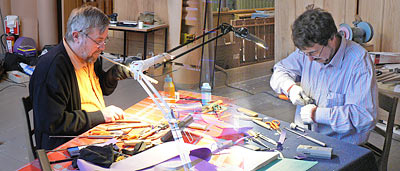
Translation: Leena Tuomola and Andrew Plumridge
-------------

Central Pori Church
Paschen Kiel Orgelbau GmbH 2007
Specification
I Grand Orgue
Montre 16
Bourdon 16
Montre 8
Bourdon 8
Violoncelle 8
Flûte harmonique 8
Prestant 4
Flûte octaviante 4
Quinte 2 2/3
Doublette 2
Fourniture 5r
Cymbale 4r
Cornet 5r
Basson 16
Trompette 8
Clairon 4

II Positif expressif
Quintaton 16
Principal 8
Flûte 8
Cor de nuit 8
Salicional 8
Unda maris 8
Prestant 4
Flûte douce 4
Nasard 2 2/3
Doublette 2
Tierce 1 3/5
Plein jeu harmonique 3-6r
Piccolo 1
Cor anglais 16
Trompette 8
Clarinette 8
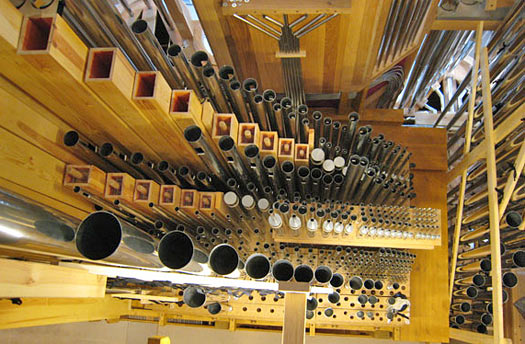
III Récit expressif
Bourdon 16
Diapason 8
Flûte traversiere 8
Viole de gambe 8
Voix céleste 8
Flûte octaviante 4
Viole d’amour 4
Octavin 2
Plein jeu 4r
Bombarde 16
Trompette harmonique 8
Clairon 4
Basson et hautbois 8
Voix humaine 8
Pédale
Soubasse 32
Contrebasse 16
Soubasse 16
Basse 8
Bourdon 8
Violoncelle 8
Flûte 4
Bombarde 32
Bombarde 16
Basson 16
Trompette 8
Clairon 4
Pédales de Combinaisons
Effet d’orage
Tirasse Grand Orgue
Tirasse Positif
Tirasse Récit
Anches Pédale
Octaves Graves Grand Orgue
Octaves Graves Récit
Tremolo Positif
Expression Positif
Expression Récit
Tremolo Récit
Anches Grand Orgue
Anches Positif
Anches Récit
Introduction Grand Orgue
Copula Positif/Grand Orgue
Copula Récit/Grand Orgue
Copula Récit/Positif
Built by: Paschen Kiel Orgelbau GmbH
Specification: Kurt Lueders, Paris, France
Façade: Roland Monczynski, Germany
Technical layout: Roland Monczynski
Voicers: Helmuth Gripentrog, Kalevi Mäkinen
